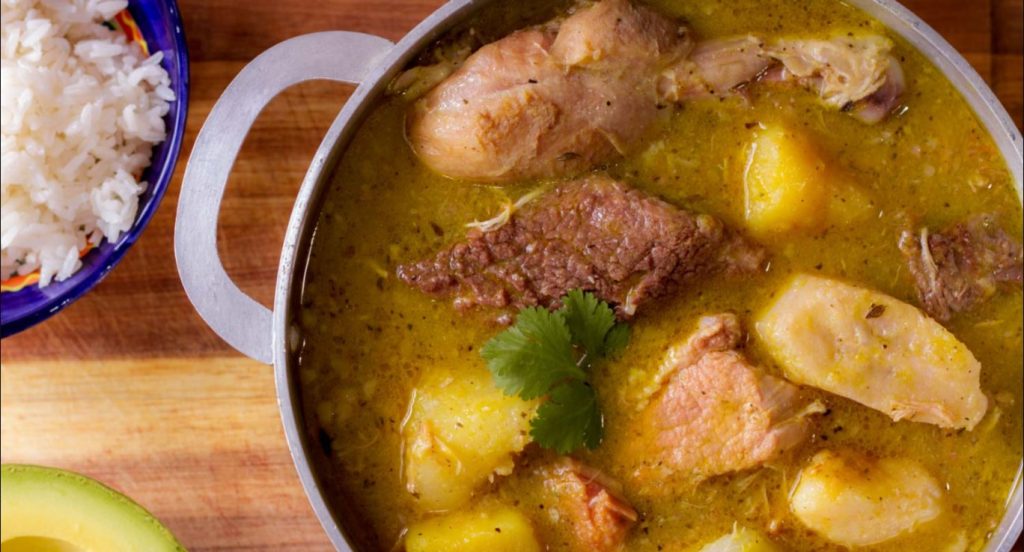The culinary scene of the Dominican Republic is a rich tapestry of flavors, influenced by a blend of Indigenous, African, and Spanish culinary traditions. Dominican cuisine is characterized by its use of fresh ingredients, bold spices, and vibrant colors. Want to sink your teeth into Dominican cuisine? Here’s what you should try.
Staple Ingredients
Rice and Beans: Rice and beans are staple foods in Dominican cuisine and are often served together as “moro” (rice cooked with beans) or “concon” (crispy rice from the bottom of the pot).
Plantains: Plantains are a versatile ingredient used in both savory and sweet dishes. They can be fried, boiled, mashed (mofongo), or made into chips (tostones).
Tubers and Root Vegetables: Yuca (cassava), sweet potatoes, and yautía (taro) are commonly used in Dominican cooking, often boiled, fried, or mashed.
Seafood: With its coastal location, the Dominican Republic offers an abundance of fresh seafood, including fish, shrimp, lobster, and crab, which are commonly grilled, fried, or stewed in dishes such as “pescado frito” (fried fish) and “mariscada” (seafood stew).
Signature Dishes
Mangu: Mashed plantains seasoned with onions and served with fried cheese, eggs, and salami. It is a popular breakfast dish and a Dominican comfort food.
Sancocho: A hearty stew made with a variety of meats (such as beef, chicken, and pork), root vegetables, plantains, and spices. Sancocho is often served on special occasions and gatherings.
La Bandera Dominicana: Translating to “the Dominican flag,” this dish consists of white rice, stewed beans, and meat (usually chicken, beef, or pork), served with salad or fried plantains. It is considered the national dish of the Dominican Republic.
Locrio: Similar to paella, locrio is a one-pot rice dish cooked with meat or seafood, vegetables, and spices. It is a flavorful and satisfying meal enjoyed by locals and visitors alike.
Street Food and Snacks
Empanadas: Deep-fried turnovers filled with meat (beef, chicken, or pork), cheese, or vegetables. They are a popular street food snack and can be found in various flavors and fillings.
Pastelitos: Similar to empanadas, pastelitos are fried pastry pockets filled with meat, cheese, or vegetables. They are often served as a savory snack or appetizer.
Chimichurri: Dominican-style burgers made with seasoned beef patties, cabbage slaw, tomatoes, onions, and a special sauce, served on a bun or with fried plantains.
Desserts and Sweets
Dulces de Leche: Milk-based sweets such as “dulce de leche” (caramelized milk) and “dulce de coco” (coconut candy) are popular desserts in the Dominican Republic.
Flan: A creamy caramel custard dessert made with eggs, milk, and sugar. It is often served chilled and garnished with caramel sauce.
Helados de Coco: Coconut ice cream is a refreshing treat enjoyed year-round, particularly in coastal areas where coconuts are abundant.
Beverages
Mamajuana: A traditional Dominican alcoholic drink made by steeping rum, red wine, honey, and various herbs and spices. It is believed to have medicinal properties and is often consumed as a digestive tonic.
Morir Soñando: A popular beverage made with orange juice, milk, sugar, and ice, creating a creamy and refreshing drink that translates to “to die dreaming” in English.
Presidente Beer: The most popular beer in the Dominican Republic, Presidente is a light and refreshing lager that pairs well with local cuisine and is enjoyed by locals and visitors alike.
Overall, the culinary scene of the Dominican Republic is a delightful fusion of flavors, showcasing the country’s diverse cultural heritage and abundance of fresh ingredients. Whether you’re savoring traditional dishes, indulging in street food snacks, or enjoying tropical desserts and beverages, Dominican cuisine offers a delicious and unforgettable culinary experience.



